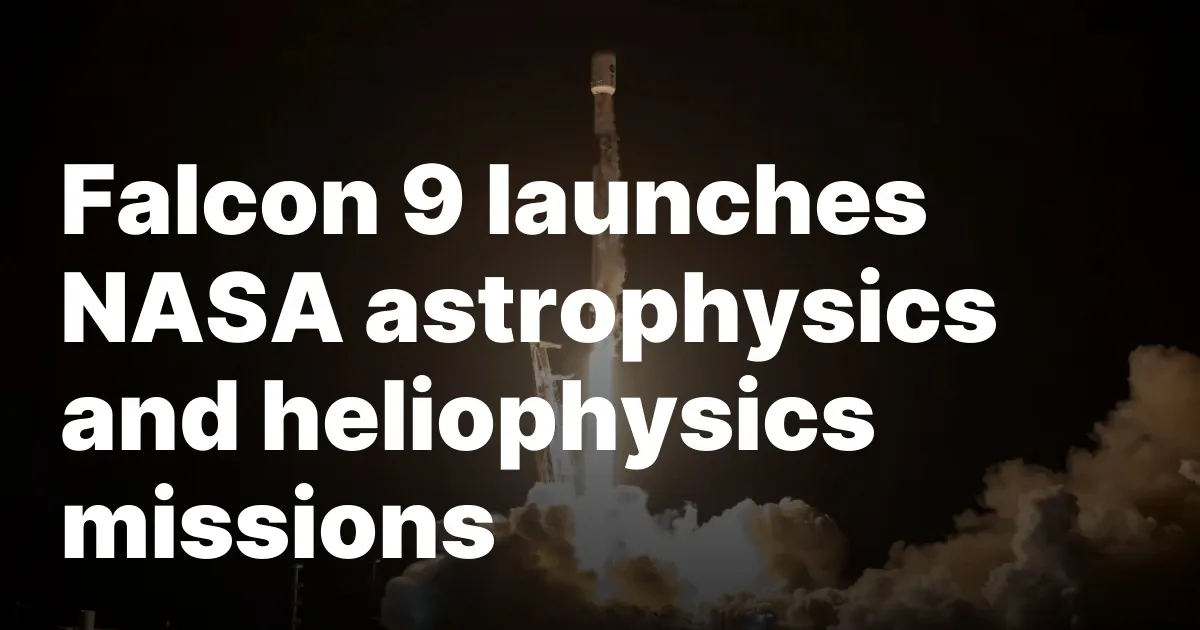
On March 11, 2023, a SpaceX Falcon 9 rocket successfully lifted off from Vandenberg Space Force Base in California at 11:10 p.m. Eastern Time. This mission marked a significant milestone for NASA as it launched two important science missions: the Spectro-Photometer for the History of the Universe, Epoch of Reionization and Ices Explorer (SPHEREx) and the Polarimeter to Unify the Corona and Heliosphere (PUNCH). Both spacecraft were placed into sun-synchronous orbits and established communication with ground controllers shortly after launch.
Navigating the cosmos, NASA has adopted an innovative approach by launching two missions simultaneously. By utilizing the excess capacity of the Falcon 9, originally contracted for SPHEREx, NASA maximized its resources. Mark Clampin, acting deputy associate administrator for science at NASA, emphasized the significance of this change during a pre-launch briefing on March 7. “This is a real change in how we do business. We can maximize the efficiency of launches by two payloads at once,” he stated.
Julianna Scheiman, director of NASA science missions at SpaceX, echoed these sentiments, noting that while SpaceX has successfully conducted numerous commercial rideshare missions, this marked the first for NASA’s Launch Services Program. Looking ahead, two more NASA rideshare launches are slated for later this year, featuring the IMAP and TRACERS heliophysics missions.
The launch of SPHEREx and PUNCH encountered delays, primarily due to technical issues during the launch processing phase. Scheiman explained that a series of integration problems arose, particularly with an impedance mismatch assembly that required new fasteners. These issues contributed to a significant portion of the delay.
Furthermore, when the spacecraft were encapsulated in the payload fairing, technicians discovered a leak in the pneumatic system designed to separate the fairing during flight. This necessitated repairs before the fairing could be reinstalled. Weather conditions also impacted the transport of the payload to the launch pad, and a high-priority range operation halted launch preparations. This delay involved the X-37B spaceplane, which landed at Vandenberg on March 7. Additional launch attempts on March 8 and March 10 were scrubbed due to unspecified issues and adverse weather conditions.
SPHEREx is a medium Explorer-class mission with an overall budget of $488 million. It aims to conduct an all-sky infrared spectroscopic survey, imaging the sky across 102 wavelength bands from 0.75 to 5 microns. Utilizing a wide-field telescope with a 20-centimeter diameter, SPHEREx can complete a full scan of the entire sky in just six months.
“Even though SPHEREx uses a small telescope, it looks at the universe in a new way,” said Jaime Bock, principal investigator for the mission at Caltech. The mission addresses three compelling themes: investigating the early universe and cosmic inflation post-Big Bang, understanding the formation and evolution of galaxies, and measuring water and organic materials in the Milky Way galaxy. “The discoveries that SPHEREx will make will answer fundamental questions about how we got here,” added Shawn Domagal-Goldman, acting director of NASA’s astrophysics division.
The 502-kilogram spacecraft was developed by BAE Systems, which also designed the mission's telescope. This innovative telescope employs a lightweight, “free-form optic” design that meets the mission's stringent requirements while adhering to budget constraints. The unique appearance of SPHEREx is characterized by three concentric cones, known as photon shields, which protect the telescope from solar interference.
PUNCH serves as the secondary payload of this launch, representing a $150 million small Explorer mission consisting of four 64-kilogram satellites. Three of these satellites are equipped with wide-field imagers to observe the sun, while the fourth features a narrow-field imager. “PUNCH fills in the science puzzle between the sun’s outer atmosphere, the corona, and the Earth,” stated Joe Westlake, director of NASA’s heliophysics division.
The coordinated efforts of the four satellites will enable scientists to create three-dimensional maps of the solar corona, facilitating a deeper understanding of how it transitions into solar wind. This mission will also study the impact of coronal mass ejections (CMEs) on space weather events affecting Earth. “PUNCH is the first instrument to have the sensitivity and resolution to observe daily space weather,” noted Nicholeen Viall, PUNCH mission scientist at NASA’s Goddard Space Flight Center.
PUNCH is part of a growing fleet of NASA heliophysics spacecraft. As Westlake indicated, while many team members involved in the SPHEREx/PUNCH launch will return home, the staff will remain at Vandenberg for upcoming missions, including the Electrojet Zeeman Imaging Explorer (EZIE), which aims to study the aurora and is scheduled for launch on SpaceX's Transporter-13 rideshare mission.